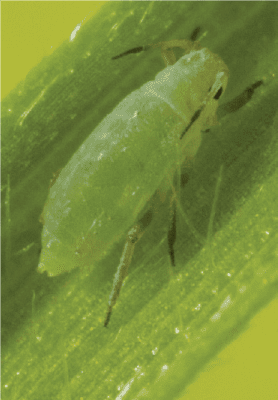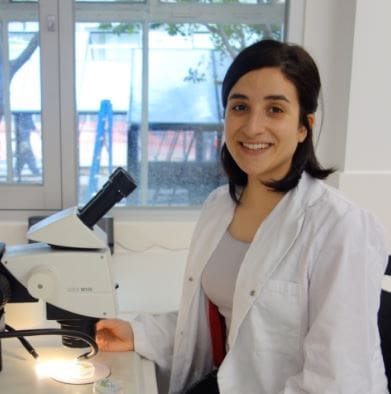GRAIN growers are intensifying their monitoring of crops as spring conditions promote insect pest population growth and activity, and potential crop damage.

Farmers are intensifying their monitoring for pests, such as the Russian wheat aphid, as warmer conditions arrive.
Insect management experts say effective control of pests – this year and in the future – will require an integrated approach involving a mix of chemical, biological and cultural controls.
They say thorough routine monitoring is now required, especially in areas where the newly-introduced Russian wheat aphid (RWA) has established, as temperatures increase and crops reach critical growth stages.
Entomologists who co-ordinate the Grains Research and Development Corporation-supported PestFacts news services report that RWA populations appear to have stabilised in most parts of Victoria and southern NSW, while in South Australia reports indicate a rise in populations in some areas, as would be expected with gradually warming temperatures.
The number of winged adults in SA has also increased, indicating that some levels of dispersal are likely to have commenced.
The GRDC has produced a video which outlines the principles of Integrated Pest Management (IPM) and provides useful advice on dealing with RWA.
The video, which can be viewed at https://www.youtube.com/watch?v=iH6nnU-JKlo, features cesar entomologist Dr Paul Umina outlining the GRDC’s RWA FITE strategy, based on the four steps of: Find, Identify, Threshold Approach, and Enact.
Dr Umina says while individual circumstances will dictate each grower’s response, the FITE strategy remains the cornerstone plan of action.
“The first step of the FITE strategy is about how to find and locate RWA within cereal paddocks,” Dr Umina said.
“The second step is positive identification of RWA through consultation with an industry specialist.
“The next step is to adopt a threshold approach. Based on overseas literature there are two indicative thresholds suggested for consideration by growers in Australia. Up until the tillering stage, the suggested economic threshold of when chemical sprays should be applied, is when 20 percent or more plants are infested with aphids. As we step into the high risk period in spring, from tillering onwards that threshold is reduced to 10% or more tillers infested with RWA.”
Dr Umina said given that the aforementioned thresholds are indicative only, based on overseas information, growers and advisers should make a decision based on their individual situation and consider other factors including crop yield potential, actual number of aphids per individual tiller, timing of infestation and cost of the control measure to be applied.
“The fourth step is around enacting an appropriate management strategy for each individual situation. Currently there are two chemicals listed for RWA control under emergency use permit 82792 issued by the Australian Pesticides and Veterinary Medicines Authority. Those two products are chlorpyrifos and pirimicarb. If chemical control is warranted, consider using pirimicarb which is softer on many beneficial species.”
Growers are reminded of the longer (six week) withholding period for grazing and harvest when using pirimicarb and should always read the product label before use.
Dr Umina encourages growers to “Bee Aware” and consider the impact of insecticides on foraging bees.
The positive contribution of beneficial insects to IPM strategies has been underlined in recent weeks, with high populations of parasitoid wasps associated with RWA populations, along with several predatory insects such as brown lacewings, hoverflies and ladybird larvae.
With rising temperatures, cesar consultant and graduate of the GRDC and Agriculture Victoria’s Agronomist Development Program, Julia Severi, said populations of beneficial insects were likely to increase and assist in controlling RWA populations.
Ms Severi explains in the GRDC video that encouraging beneficial insects is an important element of IPM, which not only aims to prevent pests from reaching economically damaging levels, but to provide a long-term solution to crop pest incursions.
“IPM is not about abandoning chemical use all together. Rather, it aims to reduce our reliance on pesticides as the sole means of pest control on farms,” Ms Severi said.
“We know that when we rely on pesticides too much, we often get problems with resistance and eventual control failures down the track.”
Ms Severi said the four steps to adopting IPM principles began with routine monitoring of both pests and beneficial species, followed by positive identification of pest or beneficial species.
“If spraying is warranted, choose selective over broad spectrum insecticides where possible, and the final step involves incorporation of cultural control methods such as crop rotation, time of sowing, grazing, tillage and cultivation, to make the environment less favourable to pests.”
More information on IPM at: www.ipmguidelinesforgrains.com.au.
Source: GRDC


HAVE YOUR SAY